Ancient Roman Animal Husbandry: Farming Techniques Ahead of Their Time played a crucial role in the growth and sustainability of the Roman Empire. This practice was more than just raising animals for food or work; it was a complex system that supported economic development, city expansion, and military supply chains.
Roman farming methods were unique compared to others at the time because they strategically combined livestock management with crop farming, practiced early selective breeding, and used land sustainably. These approaches enabled Romans to increase output on both small family farms and large estates.
Key aspects that defined ancient Roman animal husbandry include:
- Diversification of livestock species such as cattle, sheep, pigs, chickens, and horses.
- Innovative approaches to pasture management and feeding strategies.
- Adoption and adaptation of agricultural knowledge from Mediterranean neighbors.
Understanding these historical agriculture developments reveals how Roman animal husbandry was not only advanced but also influential on future farming systems worldwide. This influence extended beyond agriculture into other areas such as art and military strategy. The masterpieces of Roman art, which emerged from the confluence of various cultures, serve as a testament to the empire’s vast reach and its ability to assimilate and innovate. Furthermore, the power and strategy of the Roman military was not merely a collection of soldiers; it was a well-oiled apparatus that combined discipline, strategy, and innovation, reflecting the empire’s vastness and diversity.
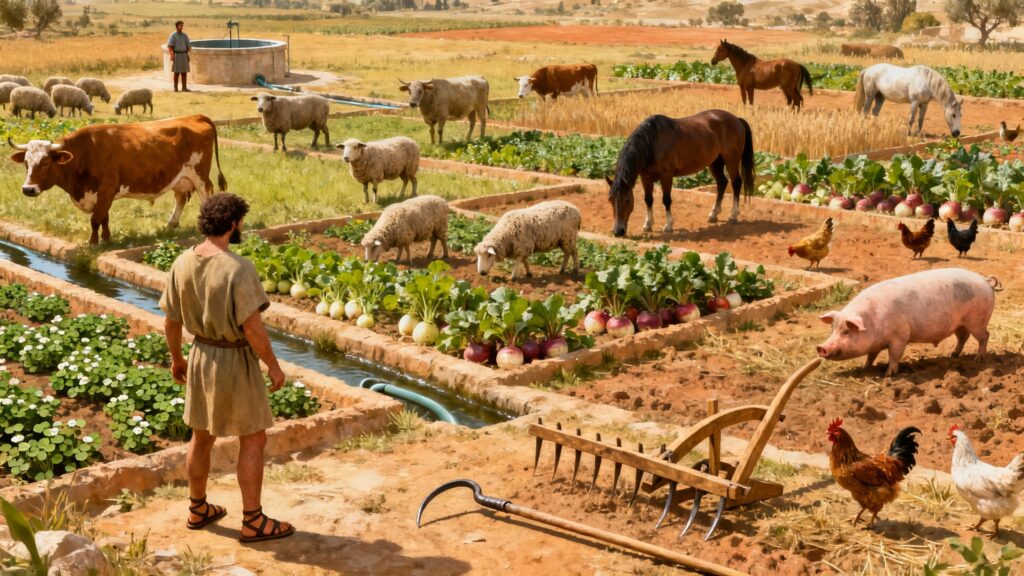
Historical Context of Roman Animal Husbandry
Animal husbandry in ancient Rome underwent significant changes, evolving from small family farms to large estates known as latifundia in later periods. Initially, Roman farming was focused on subsistence, with families raising different types of animals mainly for their own consumption and local trade. However, as Rome expanded its territories, the demand for livestock products increased, leading to the establishment of more specialized and larger-scale farming operations.
Types of Roman Livestock Included:
- Cattle: Valued for meat, milk, and as draft animals supporting ploughing and transportation.
- Sheep: Raised mainly for wool, milk, and meat; wool production was crucial for clothing.
- Pigs: A versatile meat source adaptable to different feeding environments.
- Chickens: Provided eggs and meat in smaller quantities.
- Horses: Essential for transportation, cavalry, and agricultural labor.
The agricultural practices of the Romans were influenced by their Mediterranean neighbors such as the Greeks and Carthaginians. These cultures introduced techniques like irrigation, crop diversification, and pasture management that improved livestock productivity. By incorporating these Mediterranean agricultural influences, the Romans developed advanced husbandry systems that balanced the well-being of animals with economic benefits.
The shift from family-owned farms to large estates involved not only increasing production but also implementing advanced breeding methods and organizing labor efficiently. Wealthy landowners invested in selective breeding programs and employed strategic grazing management to maintain pastures while fulfilling the needs of growing urban populations throughout the empire.
This growth of animal husbandry had significant cultural impacts as well. The Romans had a rich tradition of connecting with their gods through various rituals and sacrifices related to their livestock. These practices were deeply intertwined with their religious beliefs, which emphasized maintaining good relationships with deities through offerings such as animal sacrifices.
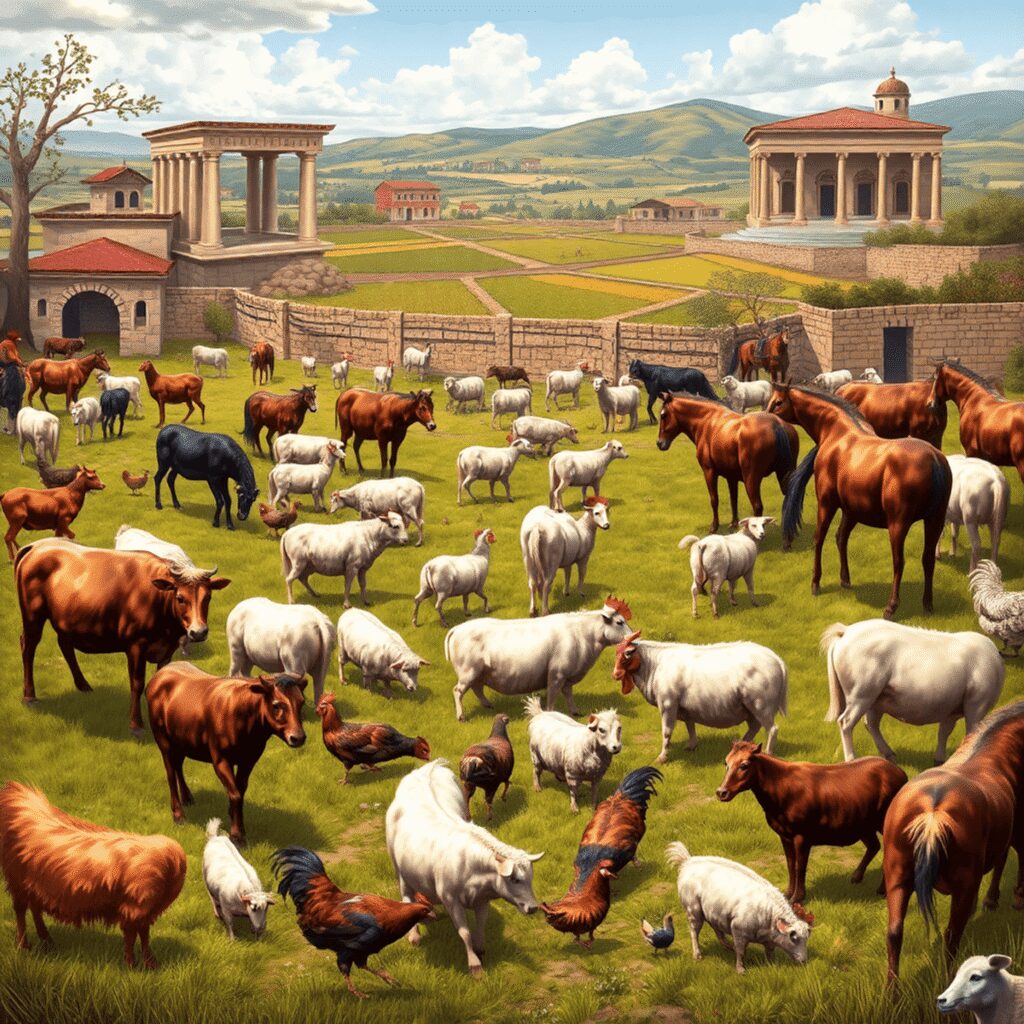
Innovative Livestock Management Practices
Roman animal husbandry featured several advanced techniques that enhanced livestock quality and farm productivity.
Selective Breeding
Romans practiced early forms of selective breeding by choosing animals with desirable traits such as size, strength, and fertility to mate. This method improved herd characteristics over generations, producing healthier cattle, more prolific sheep, and robust pigs. Selective breeding helped meet growing demands for meat, milk, wool, and labor animals.
Rotational Grazing
Rotational grazing was an essential strategy to maintain pasture health. Farmers divided grazing land into sections, allowing livestock to graze one area while resting others. This practice prevented overgrazing, preserved soil fertility, and promoted regrowth of grasses. The method sustained pasture productivity throughout the year and reduced the risk of land degradation.
Large-Scale Roman Breeding Programs
Wealthy Roman landowners operated extensive breeding programs on their estates (latifundia). These programs involved managing large herds with attention to genetic selection and controlled mating. Often staffed by skilled overseers or slaves, such programs optimized animal output for commercial markets in urban centers. They also experimented with crossbreeding to combine favorable traits from different breeds.
These innovative practices reveal how ancient Romans combined traditional knowledge with systematic approaches to maximize the value and sustainability of their livestock resources.
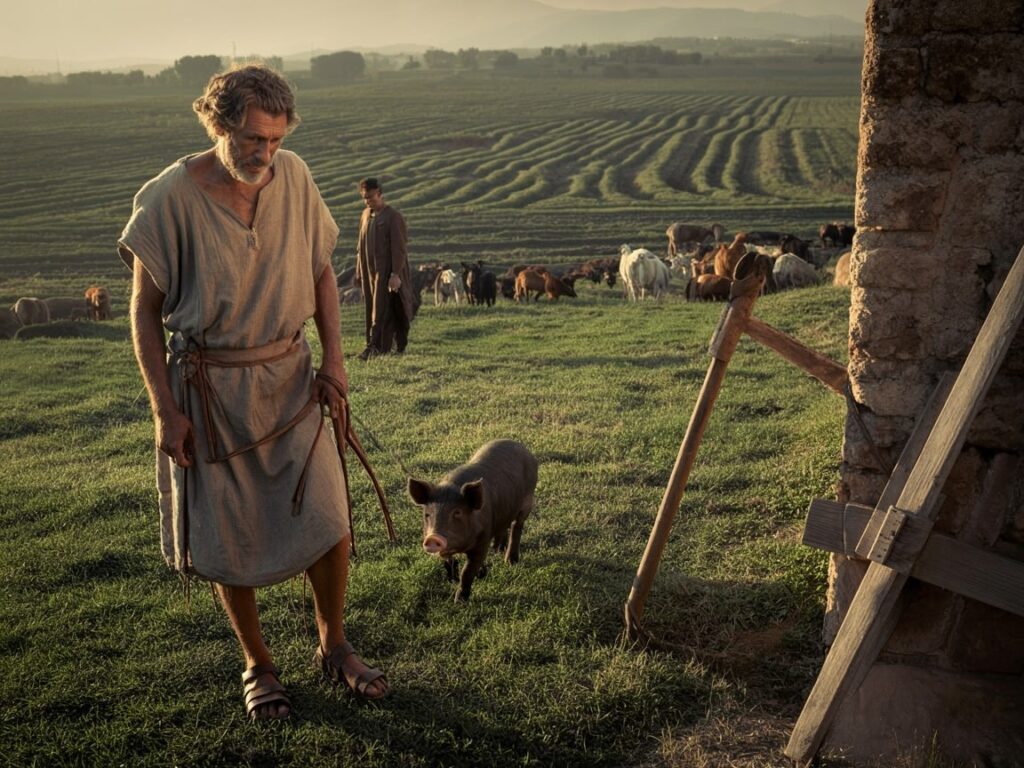
Integration of Animal Husbandry with Crop Cultivation Techniques
Convertible husbandry was a defining feature of ancient Roman agriculture, representing an early form of mixed farming systems. This method involved alternating land use between arable crops and pasture. Fields would be cultivated for cereals like wheat or barley one year, then left to grow grass or legumes the next, providing fresh grazing for livestock. This rotation helped maintain soil fertility and reduced fallow periods.
Fodder crops such as turnips, clover, and vetch played a critical role in sustaining animals during the scarce winter months. These plants enriched the soil with nitrogen while offering nutritious feed, ensuring livestock remained healthy and productive year-round. Romans also grew barley, oats, chickpeas, and fenugreek to supplement animal diets.
The relationship between crop cultivation and animal husbandry was tightly integrated:
- Livestock manure fertilized fields, enhancing crop yields.
- Crop residues served as additional fodder or bedding material.
- Grazing animals controlled weeds and improved pasture quality by trampling.
This synergy increased farm productivity beyond what isolated crop or livestock farming could achieve. By combining convertible husbandry with targeted fodder cultivation, Roman farmers optimized resource use — demonstrating advanced understanding of sustainable agricultural cycles within Ancient Roman Animal Husbandry: Farming Techniques Ahead of Their Time.”
Feeding Strategies and Sustainable Practices in Ancient Roman Animal Husbandry
Ancient Romans developed diverse animal diets tailored to species-specific needs and economic goals. Feeding regimes reflected the dual purpose of livestock: supporting household consumption and generating surplus for market trade.
Varied diets based on animal type and purpose included:
Pigs: Fed a mix of kitchen scraps, acorns, chestnuts, and agricultural byproducts. Their omnivorous nature allowed flexible diets, often supplemented with grains when available. Wealthier estates sometimes used specialized pig feeding programs to fatten animals rapidly for higher-quality meat.
Sheep and goats: Grazed primarily on natural pasture and fodder crops such as clover, vetch, and turnips. These ruminants required fibrous plant material for optimal digestion. Goats were prized for their ability to thrive on marginal land with sparse vegetation.
Romans placed strong emphasis on sustainable feeding practices to maintain long-term productivity. Efficient use of resources minimized waste while sustaining soil fertility through manure recycling. Rotational grazing prevented pasture degradation, preserving fodder availability across seasons.
Selective fodder cultivation reduced reliance on wild forage by providing consistent winter feed supplies. This balance between crop production and livestock nutrition reflected an early understanding of integrated farm ecosystem management that prioritized resource efficiency alongside animal health.
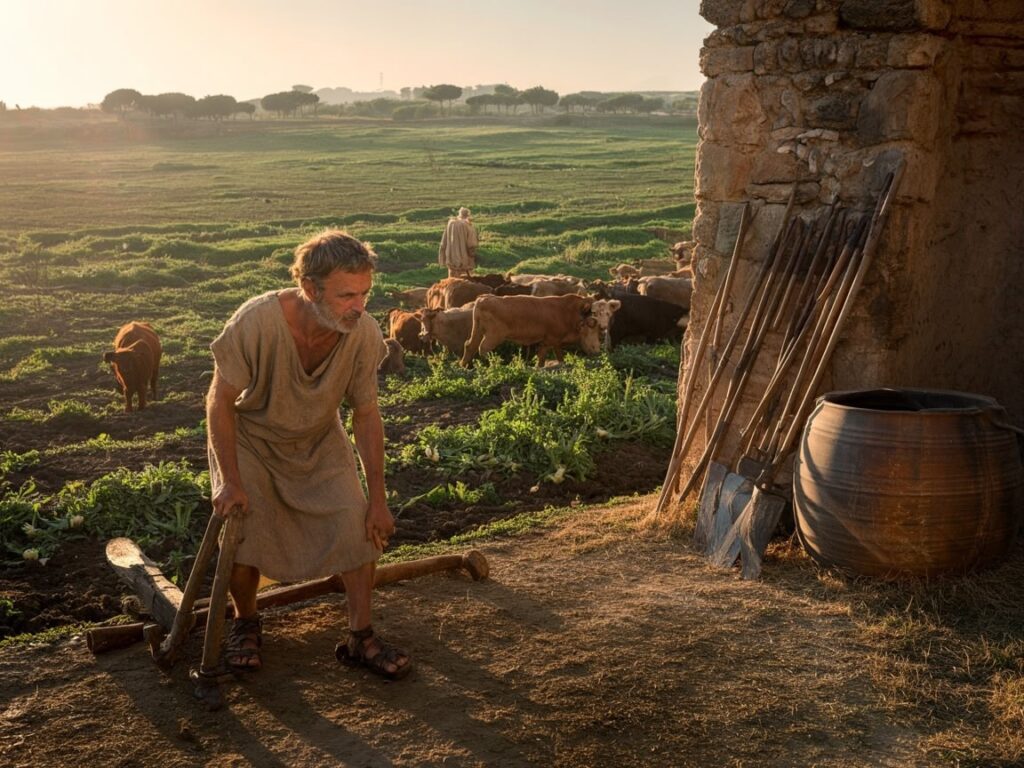
Tools, Techniques, and Labor Systems Supporting Animal Husbandry in Rome
Roman animal husbandry benefited greatly from specialized agricultural tools designed to enhance efficiency and productivity. The ard plough, a lightweight and versatile wooden plough tipped with iron, was essential for breaking soil and preparing fields for fodder crops that fed livestock. Iron-tipped sickles were widely used for harvesting grasses and legumes, facilitating timely collection of feed. These tools represent the practical ingenuity behind Roman farming.
Water management played a crucial role in sustaining pastures and improving grazing conditions. Romans engineered extensive irrigation systems, including ditches and canals, to direct water to dry or uneven lands. This enhanced pasture quality, supporting healthier herds through consistent forage availability. Cisterns and wells supplemented these irrigation efforts in arid regions, showcasing advanced understanding of resource control.
Labor organization on large estates or latifundia involved a structured workforce composed mainly of slaves and tenant farmers (coloni). Slave labor provided the backbone for managing vast tracts of land, performing everything from herding to tool maintenance. Tenant farmers worked smaller portions under lease agreements, contributing to both crop cultivation and animal care. This division of labor allowed wealthy landowners to oversee expansive breeding programs while maintaining operational efficiency.
These tools, water technologies, and labor systems combined to create a highly productive framework that supported Roman animal husbandry on scales not matched by many contemporaries. Interestingly, the wealth generated from such agricultural practices was often reflected in the currency of the time. Coins were not merely a means of trade; they also served as powerful propaganda tools for emperors, conveying their authority and legitimacy. This aspect of currency usage is explored further in the article on Coins as Propaganda: The Currency of Power by Men of Pompeii.
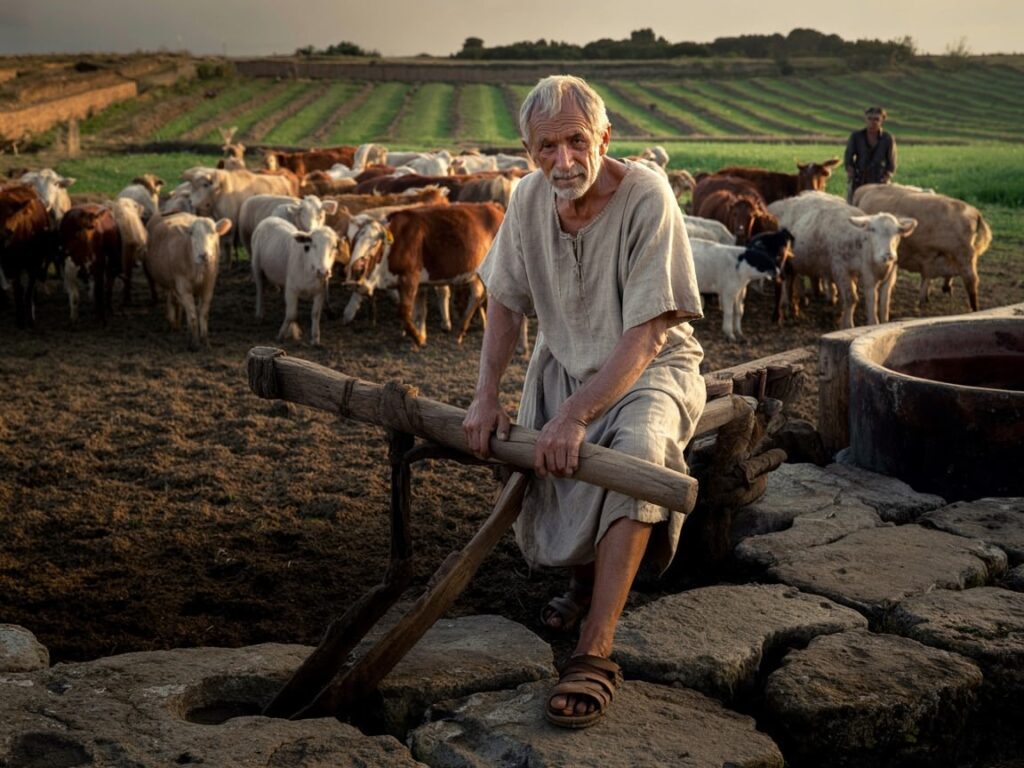
Economic, Social Impact, Environmental Sustainability & Animal Welfare Practices Associated with Ancient Roman Animal Husbandry
Animal products such as milk, cheese, and wool played a vital role in the agrarian economy of Rome. These goods formed the backbone of rural livelihoods and created vibrant markets in urban centers. Wool from sheep was highly valued for textile production, while dairy products supported both nutritional needs and commercial trade.
The empire’s extensive trade networks for livestock products, ensured that grains, meats, and animal by-products moved efficiently across provinces. Well-established routes connected rural producers to city consumers, fostering economic integration throughout Roman territories. These distribution channels helped stabilize food supplies and supported growing urban populations.
Roman farmers demonstrated an early commitment to ancient sustainability practices within their agricultural systems. Crop rotation cycles were implemented not only to maintain soil fertility but also to support healthy pastures for grazing animals. Pasture management techniques prevented overuse by rotating grazing areas, preserving long-term productivity.
Animal welfare considerations were embedded in these sustainable practices. Maintaining balanced diets and proper grazing schedules contributed to healthier livestock, reducing disease outbreaks and increasing yields. This thoughtful approach to farming foreshadowed modern principles of environmental stewardship combined with animal care.
However, the decline of the Western Roman Empire serves as a stark reminder of how political instability and weak leadership can undermine even the most powerful civilizations. As one of history’s most formidable empires, Rome’s downfall was not merely the result of external invasions but rather a complex interplay of internal strife and ineffective governance which is explored in detail in this article on political instability and weak leadership.
The integration of economic activity, environmental mindfulness, and social structure highlights why Ancient Roman Animal Husbandry: Farming Techniques Ahead of Their Time remains relevant to contemporary agricultural discussions.
Insights from Classical Agricultural Texts on Ancient Roman Animal Husbandry Practices
Ancient Roman agricultural wisdom is richly documented in key texts that remain invaluable for understanding animal husbandry during that era. Two cornerstone works are De Agri Cultura by Cato the Elder and De Re Rustica by Columella.
Practical Guidance from Cato the Elder
Cato the Elder’s De Agri Cultura offers practical guidance on managing small to medium estates, emphasizing simplicity and efficiency in livestock care. Cato advises on:
- Selecting hardy breeds
- Regular inspection of animals
- Maintaining clean shelters to prevent disease
Systematic Approaches from Columella
Columella’s De Re Rustica provides a more comprehensive, systematic approach suitable for large-scale operations. He details advanced techniques such as:
- Breeding strategies tailored to improve stock quality
- Pasture rotation schedules to sustain land fertility
- Feeding regimens optimized for different species including cattle, sheep, and pigs
- Use of medicinal herbs and natural remedies to treat common ailments
These insights from Columella’s work have been further explored in recent studies, highlighting their relevance even in today’s agricultural practices. For instance, this article delves into how some of Columella’s techniques can be adapted to modern farming.
The Role of Landowners in Animal Welfare
Both authors stress the importance of hands-on estate management by landowners or overseers to ensure animal welfare and productivity. Their writings reveal a sophisticated understanding of balancing economic goals with sustainable farming practices, reflecting the innovative spirit of Roman agriculture.
In fact, the principles laid out by these ancient authors can still be applied today, as evidenced by this research that explores sustainable practices in modern agriculture inspired by ancient wisdom.
The Lasting Impact of Ancient Roman Animal Husbandry on Today’s Farming Practices
Ancient Roman animal husbandry is a great example of how tradition and innovation came together to shape the course of agricultural history. The influence of Roman agriculture, similar to the significant effect of Roman law on present-day legal systems, goes beyond its time, establishing fundamental practices that are still important in modern farming.
Key Contributions
Some of the key contributions from ancient Roman animal husbandry that continue to impact farming today include:
- Selective breeding techniques that enhanced livestock quality, laying groundwork for today’s genetic improvement programs.
- Implementation of rotational grazing, a method promoting pasture health and sustainable land use.
- Integration of crop-livestock systems, optimizing resource efficiency and productivity.
These practices demonstrate the practical and forward-thinking innovation in ancient farming. Methods described by Roman agronomists have influenced current breeding approaches, prioritizing animal welfare and environmental sustainability.
Ancient Roman animal husbandry was not just about survival; it shaped an agricultural legacy that continues to guide modern farmers in balancing productivity with care for the land and animals.
The significance of these early methods emphasizes why studying Ancient Roman Animal Husbandry: Farming Techniques Ahead of Their Time is crucial for comprehending and improving contemporary agricultural practices. This examination also underscores the wider impact of Roman society on Western civilization, which established the foundation for various elements of modern life, including our farming methods.
FAQs (Frequently Asked Questions)
What were the key characteristics of ancient Roman animal husbandry and its significance?
Ancient Roman animal husbandry was characterized by innovative farming techniques that were ahead of their time. It played a significant role in the development of the Roman Empire by enhancing agricultural productivity through advanced livestock management, selective breeding, and integration with crop cultivation.
How did Roman livestock management evolve from small farms to large estates?
Roman livestock management evolved from small-scale family farms to expansive latifundia or large estates. This transition involved the raising of various animals such as cattle, sheep, pigs, chickens, and horses, influenced heavily by Mediterranean agricultural practices, which allowed for more systematic and efficient animal husbandry.
What innovative livestock management practices did ancient Romans employ?
The Romans employed early forms of selective breeding to improve livestock quality and used rotational grazing to maintain pasture health and prevent overgrazing. Wealthy landowners managed large-scale breeding programs that contributed to the sustainability and productivity of their herds.
How did ancient Romans integrate animal husbandry with crop cultivation techniques?
Romans practiced convertible husbandry and mixed farming systems where fodder crops like turnips, clover, and vetch sustained livestock through winter months. This integration allowed crop and livestock farming to support each other, enhancing overall agricultural productivity.
What feeding strategies and sustainable practices were used in ancient Roman animal husbandry?
Ancient Romans tailored diverse diets for different animals based on economic and household needs. Specific feeding strategies were employed for pigs versus sheep and goats. Emphasis was placed on sustainable feeding methods that optimized resource efficiency and maintained environmental balance.
What is the enduring legacy of ancient Roman animal husbandry in modern farming practices?
The legacy of ancient Roman animal husbandry lies in its blend of tradition with innovation, particularly in breeding systems and sustainable agriculture. Many modern farming practices draw inspiration from Roman techniques such as selective breeding, rotational grazing, and integrated crop-livestock systems, underscoring their lasting impact on agricultural history.

